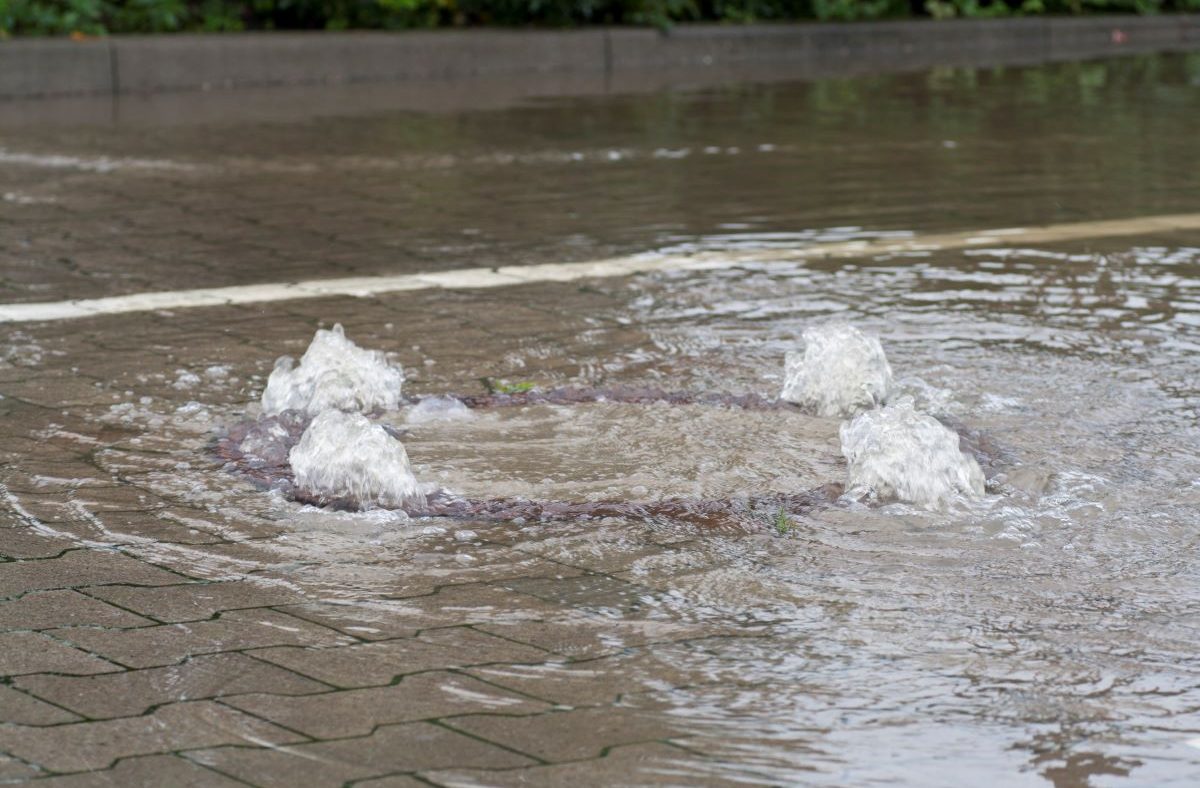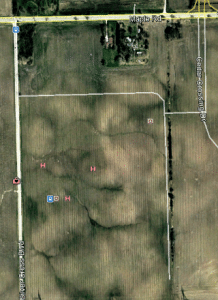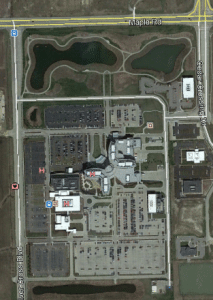Series: Stormwater Detention
Reference
Read the full article by Michael Ungeran, Forensic Engineer, published in the ASCE Illinois Summer 2018 Newsletter.

Since the 1990’s, stormwater detention systems have become a staple of site development. In areas where land and space come at a premium, sub-surface/underground stormwater detention systems have risen in popularity.
In this three-part series, we will discuss why stormwater detention systems are necessary, the different options and types of systems available, and best practices to ensure that your stormwater detention system is installed and maintained properly.
A Timeline of Events
The intent of quantitative stormwater practice is to identify the stormwater runoff of a given site and maintain or reduce the identified runoff post-development. I will use the following aerial images for our example.
Pre-Development Image courtesy of Google Earth | Post-Development Image courtesy of Google Earth |
Prior to development, the cornfields in the left image would permit much of a rainfall event to infiltrate into the ground. Most water not infiltrating into the ground runs off the site in a sheet flow manner. The post development image on the right shows a majority of the cornfield has been replaced with hardscape (pavement and structures). The infiltration ability of the hardscape surfaces not only increases the amount of stormwater shed from the developed site, the water not infiltrating into the ground runs off the site at a greater rate.
| Stormwater runoff can be calculated utilizing the Rational Method equation, where Q = C x i x A The runoff coefficient for different surfaces can be found in engineering books. |
Not facilitating a means to match or reduce the pre-developed runoff creates a potential for flooding. Quantitative controls must be put in place. A quantitative control restricts the stormwater release rate of the post-developed site, matching or reducing the release rate of the pre-developed site. In matching the pre-developed release rate for the stormwater runoff, the increased rate of the post-developed site becomes restricted. The restriction of the flow necessitates the requirement to detain the excess water until as it is released at a controlled rate.
In the right image, stormwater detention basins can be observed at the north end of the site. The stormwater basins are engineered to hold the excess water while it releases at a controlled rate. In the post-developed image, nearly twenty-five percent of the developed site was dedicated to facilitating the stormwater detention basins.
The construction cost of a pond is commonly the least expensive option for stormwater detention, however; the construction cost of a pond does not take into account the developed value of the land. Forfeiting a sizable portion of the land to a pond comes at a cost of lost opportunity. There is a threshold where the added expense of facilitating the stormwater detention underground becomes a practicable option.
In part two, we will discuss the different options and types of stormwater detention systems that are available.
To learn more about VERTEX’s Engineering Design services or to speak with an Engineering Expert, call 888.298.5162 or submit an inquiry.
Read the full article by Michael Ungeran, Forensic Engineer, published in the ASCE Illinois Summer 2018 Newsletter.